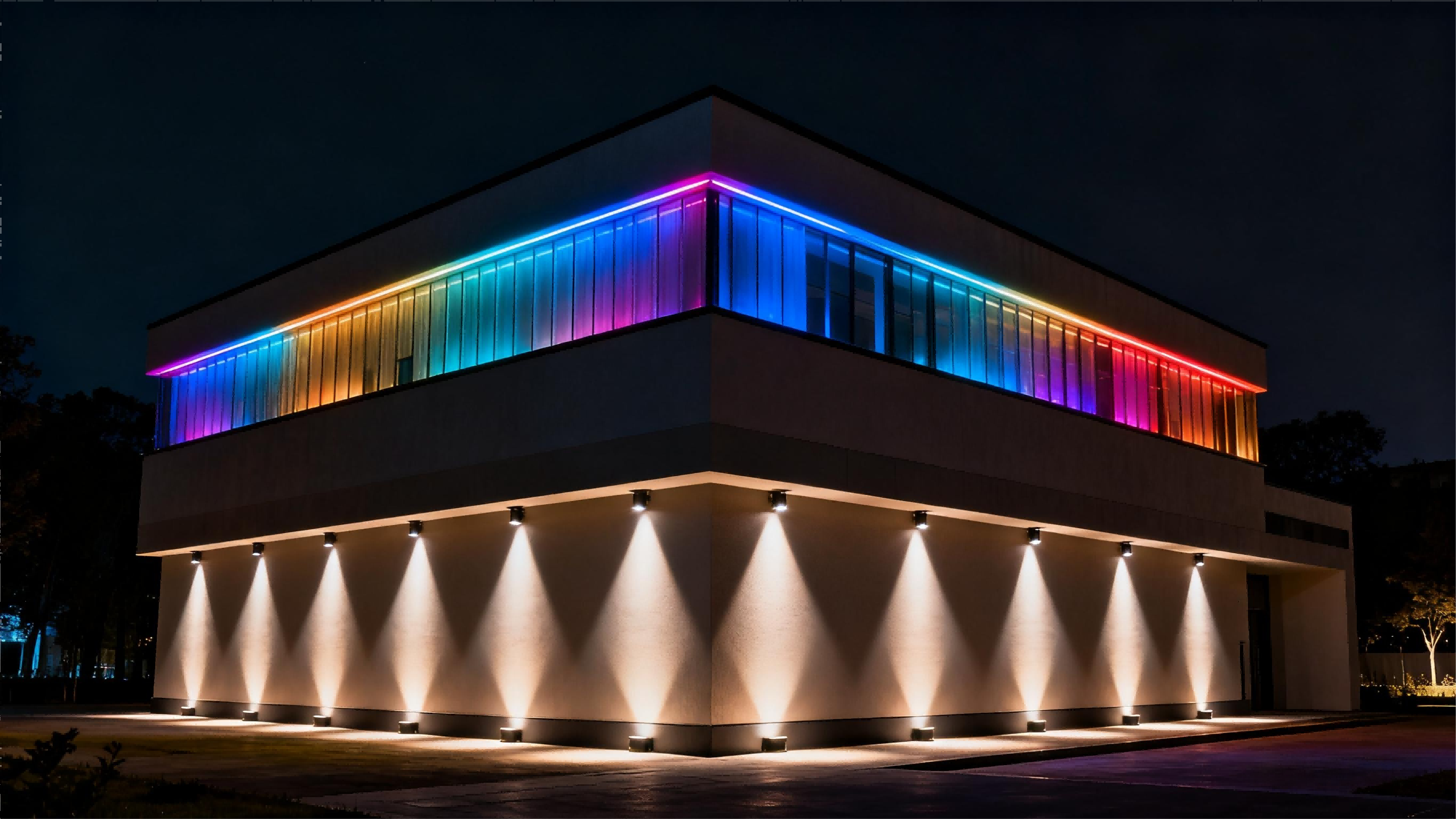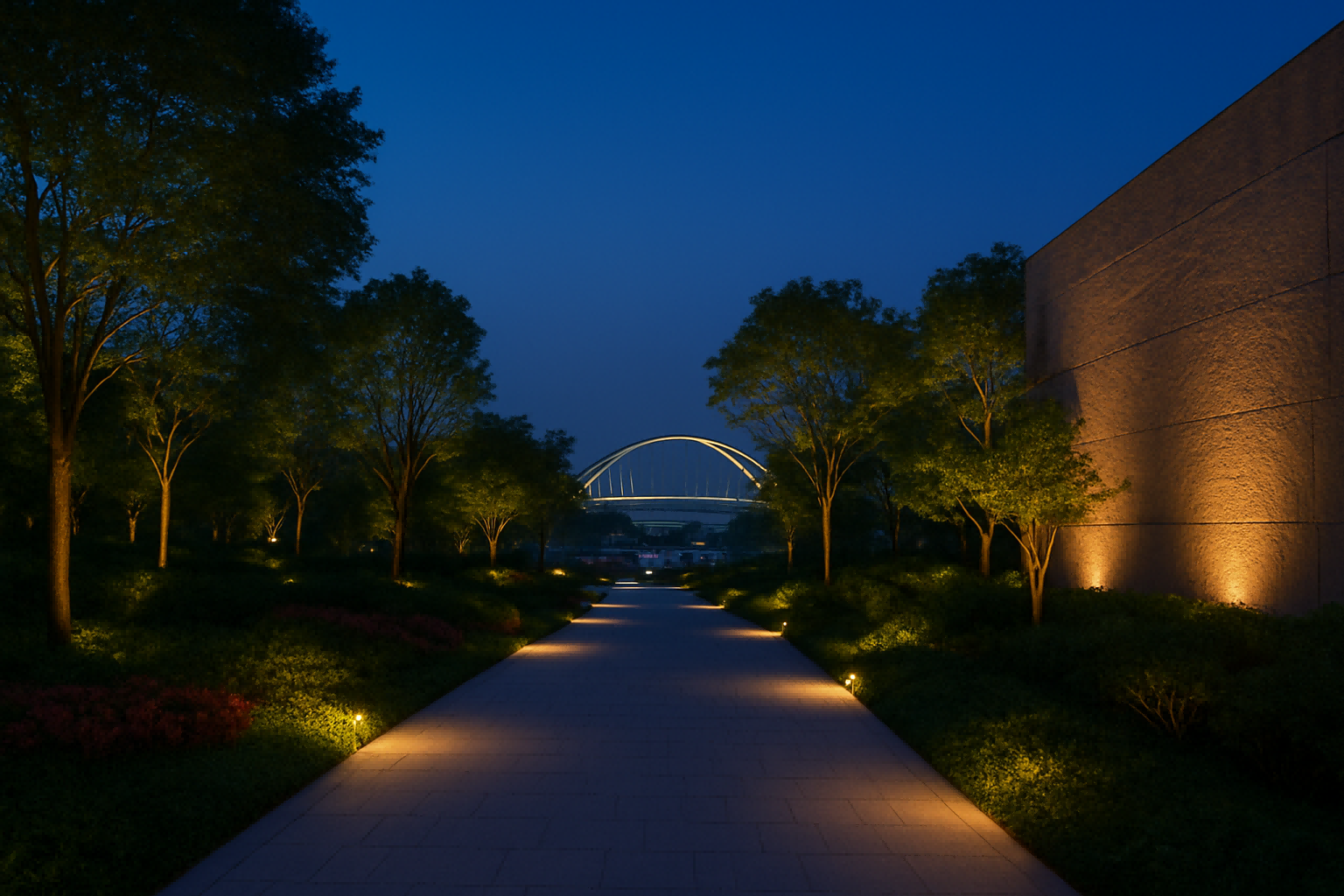How to Improve the Weather and Corrosion Resistance of Outdoor Lighting Fixtures
When you’ve worked long enough in outdoor lighting, you start seeing the weather not just as a challenge — but as a teacher. Every storm, every summer glare, and every salty breeze leaves a mark on your fixtures, quietly revealing what works and what doesn’t. Designing for durability is no longer about “protection”; it’s about understanding how nature interacts with your creation, and how light can stay loyal through time.
1. Material Matters: The Foundation of Durability
In outdoor lighting, the material is not just the body — it’s the soul. The wrong choice can make a beautiful fixture age like milk, while the right one can let it glow proudly for decades.
1.1 Choosing the Right Metal
I also remember a coastal project in the Philippines where the project team used cheap lamps that lacked proper die-cast aluminum finish. The first batch of prototypes turned chalky in just three months, a significant lesson learned.
Now, every project near saltwater gets 316 stainless steel or powder-coated marine-grade aluminum. It’s heavier and pricier, but it’s like armor against salt and humidity. For inland areas, aluminum alloy with magnesium or silicon works wonders — lightweight yet strong, like a runner built for endurance.
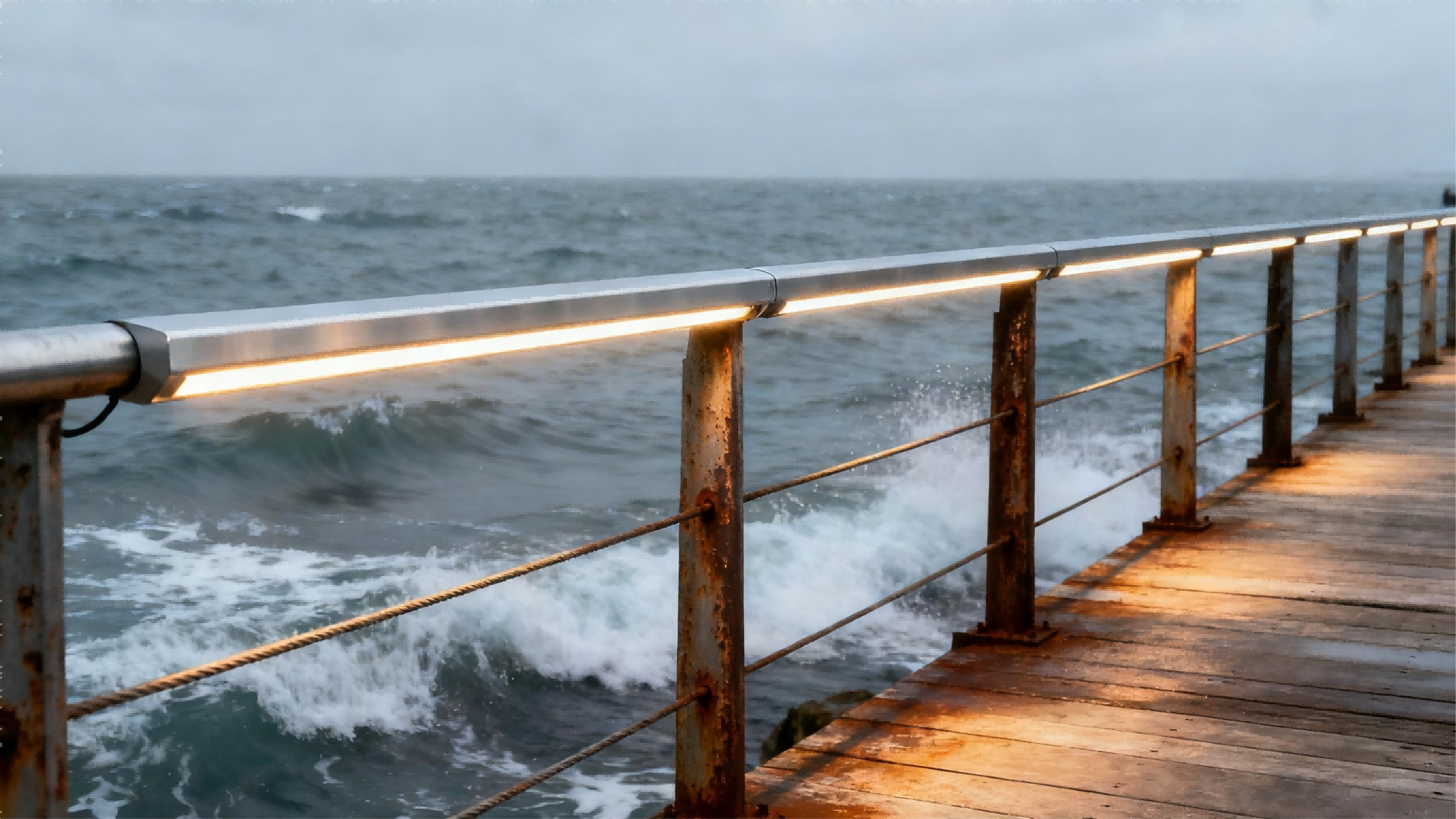
1.2 Surface Protection Layers
Think of coatings as invisible armor. In one desert project in Dubai, fixtures endured daily sandstorms. The difference between failure and survival came down to layers: primer for grip, powder coat for density, and a UV topcoat to guard against sunburn. After two years, they still looked new. The “1,000-hour salt spray test” isn’t just a number — it’s proof that the finish can survive reality.
1.3 Hardware and Connectors
Corrosion rarely starts on a wide surface; it sneaks in through the tiniest screw. We once lost a whole batch of façade lights because cheap zinc bolts reacted with aluminum housings — galvanic corrosion in action. Now, every project gets stainless steel fasteners, nylon washers, and silicone-sealed glands. Tiny decisions, huge difference.
2. Designing with Nature, Not Against It
You can’t fight water, wind, or heat — you have to dance with them. A fixture that survives the tropics must breathe, drain, and flex with the world around it.
2.1 Water and Moisture Management
Water is clever. It finds every gap, every screw, every seam. I’ve seen condensation destroy lights that were technically “waterproof.” That’s why we now design slight slopes for drainage, integrate drip edges, and add breathable membranes that let moisture escape without letting water in. A clear lens without fog inside — that’s when you know you got it right.
2.2 Heat Dissipation and Thermal Balance
In Vietnam’s summer, some façade lights hit 70°C. LEDs can’t handle that for long. The best approach? A fixture that breathes. Instead of sealing everything tight, we added heat sinks with deep fins and natural airflow paths. Suddenly, temperatures dropped by 15°C — and lifespan doubled. Sometimes, “open” design protects better than “closed.”
2.3 Structural and Mounting Design
Once, we lit up a pedestrian bridge that swayed with traffic. The first week, fixtures began to loosen. We reinforced the mounting plates, added vibration gaskets, and used flexible brackets that moved with the bridge. Problem solved — and lesson learned: buildings live and breathe too. Your fixtures should respect that rhythm.
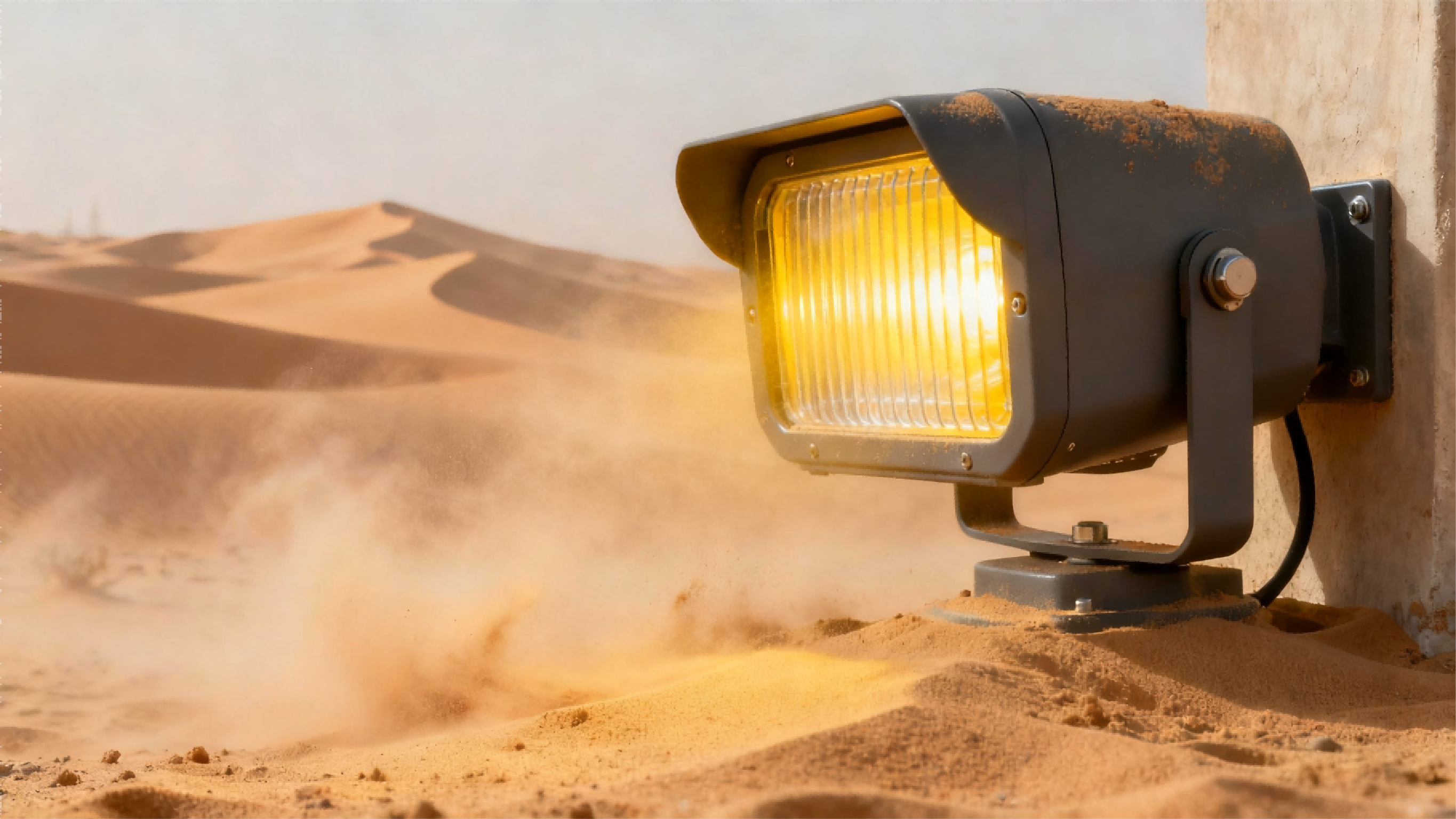
3. Coatings, Finishes, and Hidden Protections
The real fight against corrosion happens where no one looks — inside joints, beneath brackets, under paint. That’s where longevity is either won or lost.
3.1 The Layered Armor
A beautiful color means nothing if the base coat fails. We now use epoxy primers for grip, polyurethane for UV resistance, and fluoropolymer finishes for salt and chemical defense. A client once asked, “Why three layers?” I said, “Because time attacks from three sides — the air, the water, and the sun.”
3.2 Sealing the Weak Points
Every installer knows the pain of a single loose seal. I’ve seen projects last ten years simply because someone took five minutes to apply dielectric grease on connectors. Silicone rings, PTFE tapes, anti-condensation membranes — they’re small details, but they decide whether a light dies in a storm or survives a decade.
3.3 Glass and Lens Treatment
For one riverside park, we used tempered glass with nano hydrophobic coating. Even after rain, the lenses stayed clear — self-cleaning through every storm. Polycarbonate with anti-UV finish also works well for impact-heavy zones. You’d be surprised how much performance hides in a clean lens.
4. The Power of Proper Installation
Even the best product can fail if the hands that install it don’t respect its design. Installation isn’t just “the final step”; it’s the moment where theory meets real life.
4.1 Environmental Awareness
Before mounting, take a moment to understand the site. In tropical climates, humidity sneaks in from the ground; in freezing zones, water expands and cracks seals overnight. I’ve learned to adjust details — a higher mount here, an extra gasket there. No design survives if you install it blindly.
4.2 Mounting and Wiring
I’ve watched installers tilt fixtures ever so slightly, just to help water drain — that’s real craftsmanship. IP68 connectors, gel-filled boxes, and heat-shrink sleeves are non-negotiable. A few extra minutes on wiring saves months of maintenance calls.
4.3 Testing and Documentation
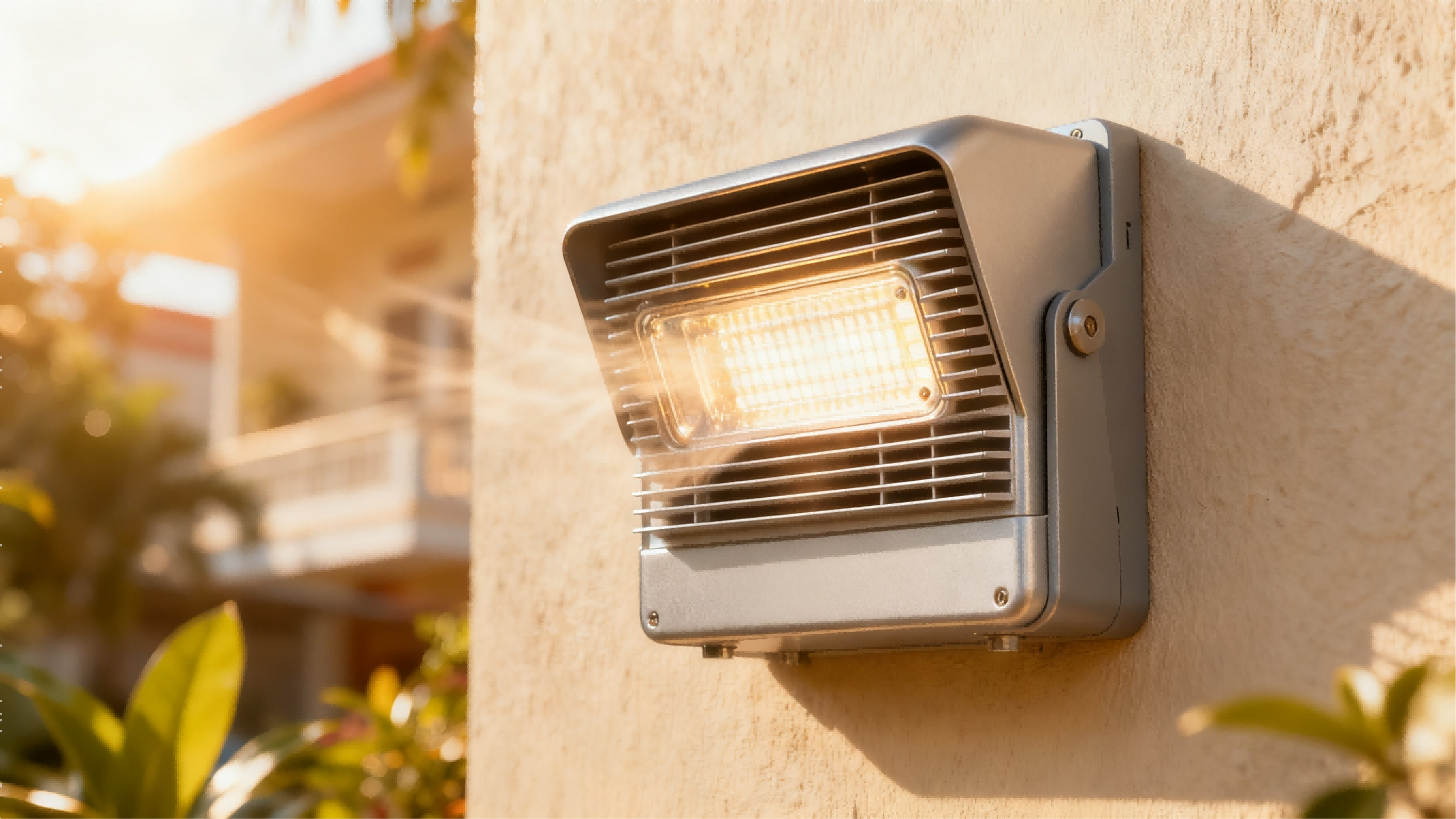
After installation, I insist on testing everything — insulation resistance, leakage, seals. One small leak left unchecked can become a year-long headache. We document each site, not just for clients but for ourselves. It’s how you build wisdom into your process.
5. Maintenance: The Art of Long-Term Care
Lighting isn’t “install and forget.” It’s a living system that deserves care — like a garden.
5.1 Routine Inspection
I recommend quarterly checkups. During one inspection in Malaysia, we spotted early rust on mounting bolts before it spread. A five-minute replacement saved 30 fixtures. Maintenance is not a chore; it’s foresight.
5.2 Cleaning and Surface Care
Dust and pollution are silent enemies. Cleaning with mild detergent and soft cloths not only keeps the look — it preserves the coating. Avoid harsh chemicals; I’ve seen glossy finishes go matte in a single wipe of acetone.
5.3 Component Renewal
Gaskets dry, screws corrode, seals lose elasticity. Replace them yearly. We once extended a resort’s lighting system lifespan by five years simply by re-lubricating stainless screws each season. Small acts, big returns.
6. Smart Engineering Meets Smart Materials
Technology is now on our side — giving us new tools to outsmart weather itself.
6.1 Intelligent Fixture Design
Some modern fixtures heat themselves just enough to prevent frost or condensation. Others dim slightly on hot days to reduce thermal stress. It’s like they “listen” to the environment — and respond. That’s design with empathy.
6.2 Advanced Materials
We’re seeing coatings with nanotechnology that repel water, resist UV, and even self-heal small scratches. A graphene-infused finish we tested last year survived acid rain simulation without a mark. The future of durability lies in chemistry as much as in mechanics.

6.3 Sustainable Durability
Durability isn’t just about lasting longer — it’s about respecting the planet. Fewer replacements mean less waste, fewer shipments, and less carbon. Longevity is the most elegant form of sustainability.
Conclusion
Weatherproof lighting isn’t built through luck — it’s built through respect. Respect for materials, for nature’s unpredictability, and for the people who will live with that light every night.
When your fixture still shines years later, through salt air and summer storms, it’s more than engineering. It’s craft. It’s care. It’s a quiet dialogue between human intention and nature’s force — and that’s when outdoor lighting becomes art.
About LNJAMI
At LNJAMI, we believe durable lighting is built through understanding the environment. Since 2008, we’ve specialized in outdoor, architectural, and landscape lighting — designing fixtures that endure heat, rain, salt, and time.
We provide complete lighting solutions, including custom design, waterproof and anti-corrosion engineering, and installation support. Whether for facade, park, or bridge illumination, LNJAMI ensures your light performs beautifully in any climate.





